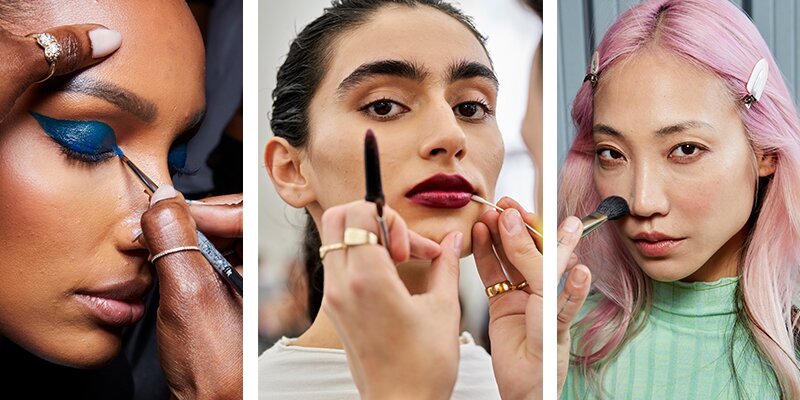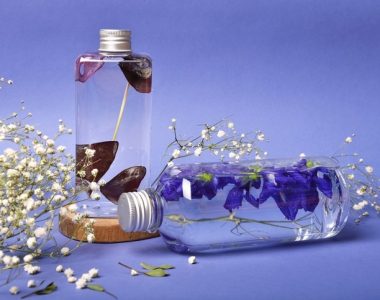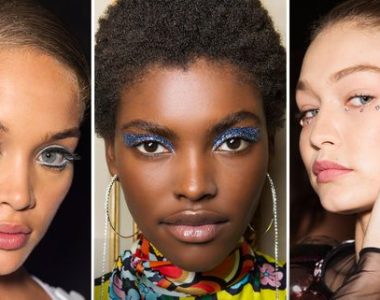
Introduction
The beauty industry is a dynamic and ever-evolving landscape, with trends that ebb and flow like the tides. From skincare innovations to makeup revolutions, the quest for enhancing one’s appearance has driven a continuous stream of product development and innovation. In this in-depth article, we’ll delve into the latest beauty product trends that have been shaping the industry in recent times.
1. Clean Beauty Product Movement
The Rise of Clean Beauty
The clean beauty movement has gained remarkable momentum in recent years. Consumers are increasingly concerned about the ingredients in their beauty products, demanding transparency and safety. This trend has led to a significant shift in the formulation of cosmetics and skincare products.
Ingredient Scrutiny
Consumers are meticulously scrutinising the ingredients in their products. They are looking for brands that exclude harmful chemicals like parabens, sulfates, and artificial fragrances. This scrutiny extends to not only the ingredients themselves but also how they are sourced and the ethical implications of the sourcing process.
Natural Ingredients
Many clean beauty brands focus on utilising natural, plant-based ingredients, often in organic or sustainably sourced forms. Ingredients like aloe vera, chamomile, and lavender have become popular due to their soothing and nourishing properties.
Sustainable Packaging
The clean beauty movement goes beyond what’s inside the bottle. Brands are now also emphasizing eco-friendly and sustainable packaging. Glass containers, recycled materials, and minimalist packaging designs are all becoming more prevalent.
2. Skincare-Centric Approach
The Skin First, Makeup Second Philosophy
The “skin first, makeup second” philosophy has become a central theme in the beauty industry. This shift in consumer priorities is transforming the way products are developed and marketed.
Multi-Step Skincare
One of the noticeable changes in recent years is the proliferation of multi-step skincare routines. These routines often include steps like double cleansing, exfoliating with acids, and the application of specialised serums. Each step is designed to address specific skin concerns.
Key Ingredients
Ingredients like hyaluronic acid, niacinamide, and retinol have become staples in many skincare routines. These ingredients offer hydration, improved texture, and anti-ageing properties, respectively.
Facial Oils and Serums
Facial oils and serums have seen a surge in popularity due to their concentrated nature. These products can deliver potent ingredients directly to the skin, making them effective solutions for targeting specific concerns like dryness, fine lines, and hyperpigmentation.
3. Inclusivity and Diversity
Celebrating All Tones and Textures
The beauty industry is moving towards inclusivity, recognising the diverse range of skin tones, hair types, and beauty needs. This inclusivity extends to both makeup and haircare.
Expanding Shade Ranges
Many makeup brands have expanded their shade ranges to cater to a wider audience. This move acknowledges the beauty of all skin tones and ensures that people of every ethnicity can find products that match their complexion.
Textured Hair Products
The demand for inclusive beauty isn’t limited to makeup. Haircare brands are also developing products tailored for different hair textures. This ranges from products for curly, coily, and kinky hair to those designed for straight or wavy hair.
Cultural Sensitivity
Inclusivity extends to being culturally sensitive in product development. For instance, recognising the importance of products for individuals with specific haircare needs, such as African-American hair care products, is a step in the right direction.
4. Personalisation and Customisation
Tailoring Beauty Routines
Consumers are seeking personalised beauty experiences, and brands are responding by offering more customisable options. This trend involves both tailored product recommendations and the ability to create unique routines based on individual needs.
AI and Skin Analysis
Technology plays a crucial role in personalisation. AI-powered skin analysis tools are becoming more prevalent, allowing consumers to receive personalised product recommendations based on their unique skin concerns.
Customisable Skincare
Many brands now offer customisable skincare solutions. This allows consumers to mix and match products, tailoring their routine to address specific concerns, whether it’s acne, fine lines, or uneven skin tone.
Fragrance Customisation
Fragrance is also part of the personalisation trend. Brands like Function of Beauty offer customised scents for shampoos and conditioners, recognising that the scent experience can be a deeply personal aspect of one’s beauty routine.
5. Sustainability and Eco-Consciousness
The Green Revolution in Beauty
Sustainability has become a cornerstone of beauty product trends. Consumers are looking for brands that prioritise eco-friendly practices, from ingredient sourcing to packaging.
Refillable Packaging
One of the most visible changes in packaging is the move towards refillable options. Brands like Fenty Beauty have introduced refillable lipstick containers, reducing waste and encouraging consumers to keep their original, stylish cases.
Biodegradable Formulations
In line with sustainability, there’s a growing emphasis on biodegradable formulations. Brands are developing products that decompose naturally, reducing the environmental footprint of discarded cosmetics.
Cruelty-Free and Vegan Products
The shift towards sustainability also encompasses ethical considerations. More brands are adopting cruelty-free practices and offering vegan products. These choices reflect a commitment to not only environmental sustainability but also the welfare of animals.
6. CBD and Hemp-Infused Beauty
The Cannabidiol Craze
The integration of CBD (cannabidiol) and hemp-derived ingredients into beauty products is a significant trend. Known for their anti-inflammatory and soothing properties, CBD and hemp are being incorporated into skincare, haircare, and wellness products.
Skin Benefits of CBD
CBD is believed to offer several skin benefits, making it a sought-after ingredient. It’s known for its potential to alleviate conditions like acne, eczema, and stress-related skin issues due to its anti-inflammatory and calming properties.
Hemp Seed Oil
Hemp seed oil, rich in essential fatty acids and vitamins, is another prized ingredient. It’s used in skincare products for its hydrating and nourishing properties.
Wellness Products
The CBD trend also extends to wellness products, including bath salts, creams, and balms. These products aim to provide relaxation and relief from everyday stress.
7. Tech-Infused Beauty
The Fusion of Technology and Beauty
The convergence of technology and beauty has given rise to a new wave of innovative products. These tech-infused solutions enhance skincare routines and revolutionize the way consumers explore and purchase makeup products.
LED Face Masks
LED face masks, like the Dr. Dennis Gross SpectraLite, are becoming popular. They use different coloured lights to target various skin concerns, from acne to signs of ageing.
Facial Rollers and Gua Sha Tools
Facial rollers and gua sha tools have gained attention due to their ability to reduce puffiness, stimulate circulation, and enhance the absorption of skincare products. These tools provide a spa-like experience at home.
At-Home Microcurrent Devices
At-home microcurrent devices, such as the NuFace Trinity, offer non-invasive facelifts by stimulating facial muscles. These gadgets promise to improve muscle tone and contour, leading to a more youthful appearance.
Augmented Reality and Virtual Try-On
Augmented reality (AR) and virtual try-on experiences are changing the way consumers explore and purchase makeup online. Brands like Sephora and L’Oréal offer virtual tools that enable consumers to try on different shades and products before making a purchase.
8. Gender-Inclusive Beauty
Breaking Down Gender Norms
The beauty industry is moving toward gender-inclusive products, recognising that individual expression and identity are not confined to traditional gender norms.
Unisex Beauty
Unisex products, formulated to suit people of all genders, are becoming more common. This shift acknowledges that everyone has unique skincare and grooming needs, regardless of gender.
Men’s Grooming
The men’s grooming segment of the beauty industry is expanding, with a focus on skincare, beard care, and hair care. Brands like Aesop and Harry’s are catering to this growing market.
Makeup for All
Makeup products are also being designed for all genders, breaking away from the notion that makeup is exclusively for women. This inclusivity supports the idea that makeup is a tool for self-expression rather than a gender-specific practice.
Conclusion
The beauty industry is undergoing a profound transformation, driven by consumer demand for clean, inclusive, and personalised products. As sustainability and technology continue to shape the industry, we can expect even more exciting innovations in the years to come. Staying informed about these trends empowers consumers to make choices that align with their values and preferences, ultimately redefining the future of beauty. With consumers becoming increasingly aware of their choices, the beauty industry will likely continue to evolve in response to these trends, ensuring that products and practices align with the values of today’s consumers. Beauty is not just skin deep; it’s an ever-evolving reflection of our values and aspirations. As we move forward, we can anticipate that these trends will continue to shape the industry and our beauty routines for years to come, reminding us that the quest for beauty is as much about innovation as it is about self-expression and well-being.



